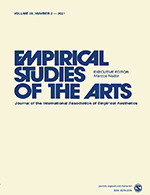Effect of Pictorial Depth Cues on Illusory Spatial Depth of the Lin Family Garden
This study analyzes how pictorial depth cues from traditional Chinese landscape painting are applied in the design of the Lin Family Garden. Using computational modeling, it reveals that architectural elements were intentionally distorted to create an illusion of spatial depth. The research highlights the integration of artistic visual techniques into physical garden layouts to enhance viewer perception.
Technology Overview
The study employs a computational approach to analyze the geometric distortions in the Lin Family Garden, utilizing computer-simulated projections to model the perspective projections of distorted geometries. This method allows for the investigation of the cause of architectural distortions and their expected visual effects, as observed in the garden. The results reveal that the distorted geometries were designed to create a pictorial presentation of elevation oblique views of architectural elements, blending into the landscape background to form a continuous scrolling painting, which unfolds in a panoramic view from the Octagonal Pavilion.
Applications & Benefits
The study provides insights into how traditional Chinese landscape paintings can inform architectural design, particularly in creating illusory spatial depth through intentional geometric distortions. By understanding the design principles behind historical gardens like the Lin Family Garden, the research contributes to the preservation and appreciation of cultural heritage. The computational modeling techniques developed in this study can serve as educational tools for teaching architectural design and the integration of art and architecture. The methods used in this research can be applied to virtual reality simulations, allowing users to experience and study historical gardens in an immersive environment.
Abstract:
The methods of creating three-dimensional depth in two-dimensional paintings in the West and the East are quite different. Chinese paintings use layers of pictorial cues of relative size to create a sense of depth, while Western paintings utilize a linear perspective to integrate size related pictorial cues. The Chinese Scholar's Garden is known for its sense of endless spatial experience and illusory scene depth. This study examined how the pictorial space composed in Chinese landscape paintings was realized in the Chinese Scholar's Garden. The Lin Family Garden was selected for its adoption of the architectural style of the Chinese Scholar's Garden, and perceptual studies were conducted. The results confirmed that the uncommon reductions of the architectural elements observed in the garden can be an intentional effort to implement the pictorial depth cue of relative size utilized in Chinese landscape paintings to enrich the spatial depth of the garden scenes.

Effect of Pictorial Depth Cues on Illusory Spatial Depth of the Lin Family Garden
Author:Tai Nan-Ching
Year:2023
Source publication:Empirical Studies of the Arts, Volume 41(2), 497–524
Subfield Highest percentage:99% Literature and Literary Theory # 9 / 1106
